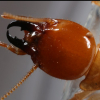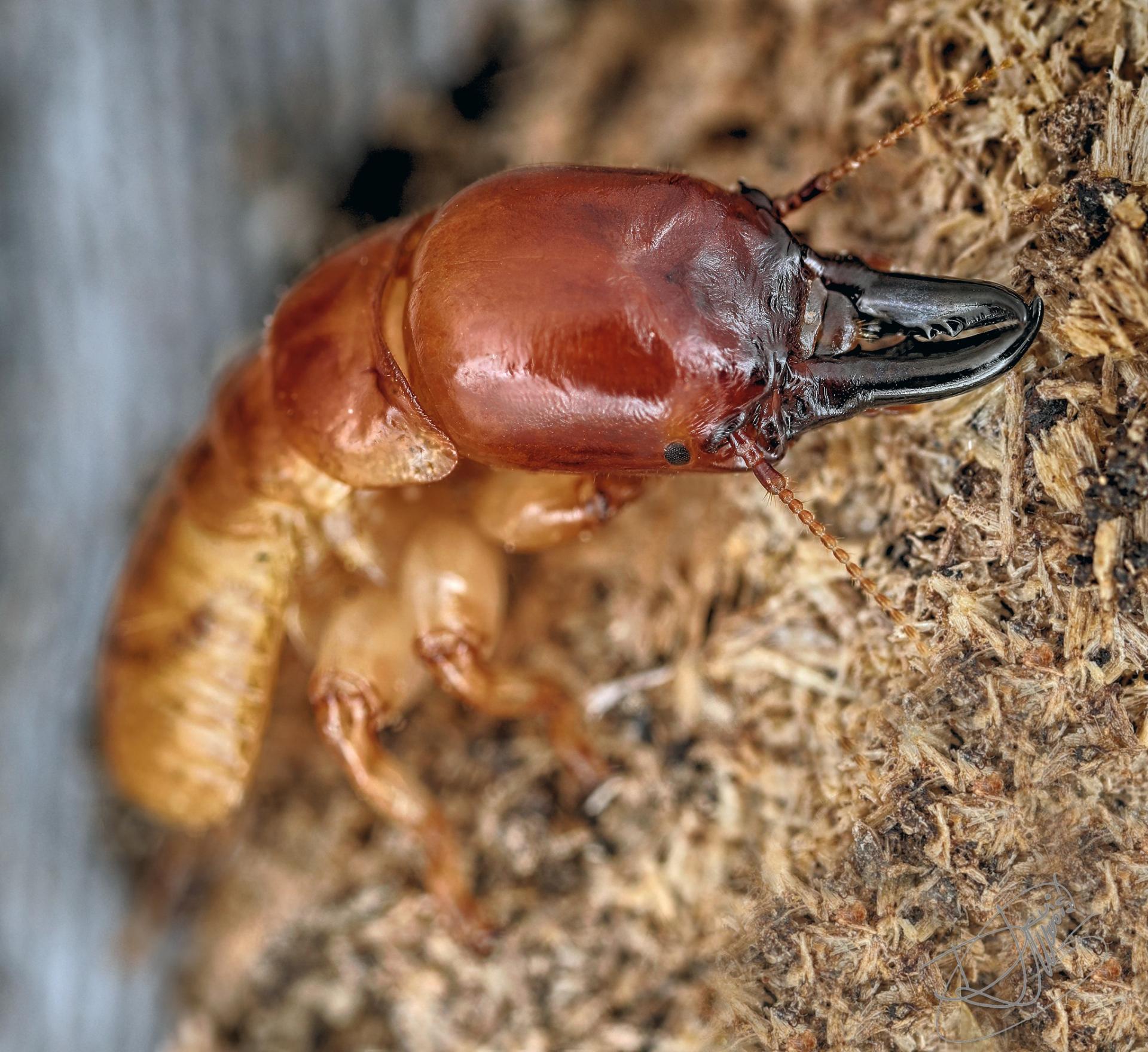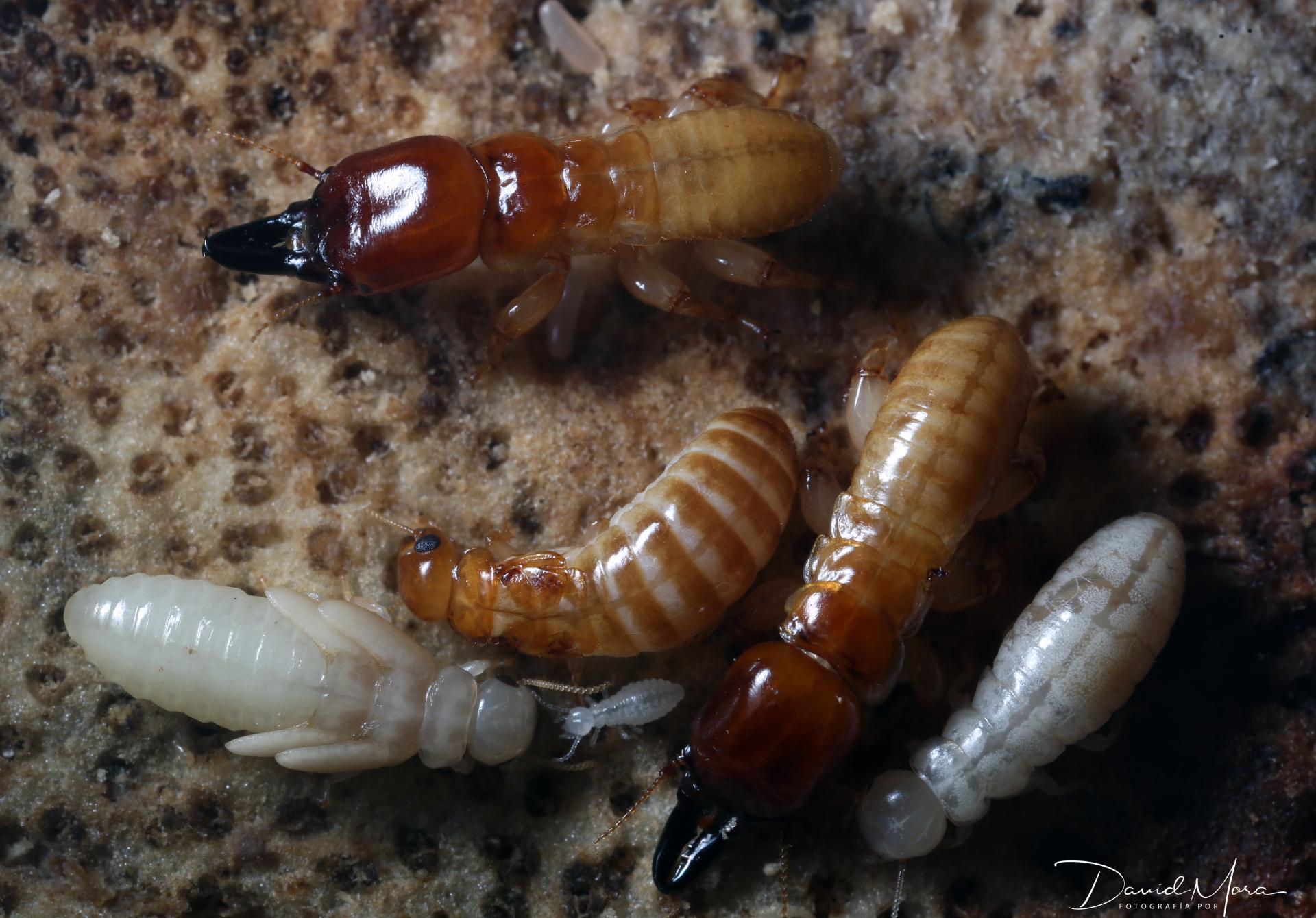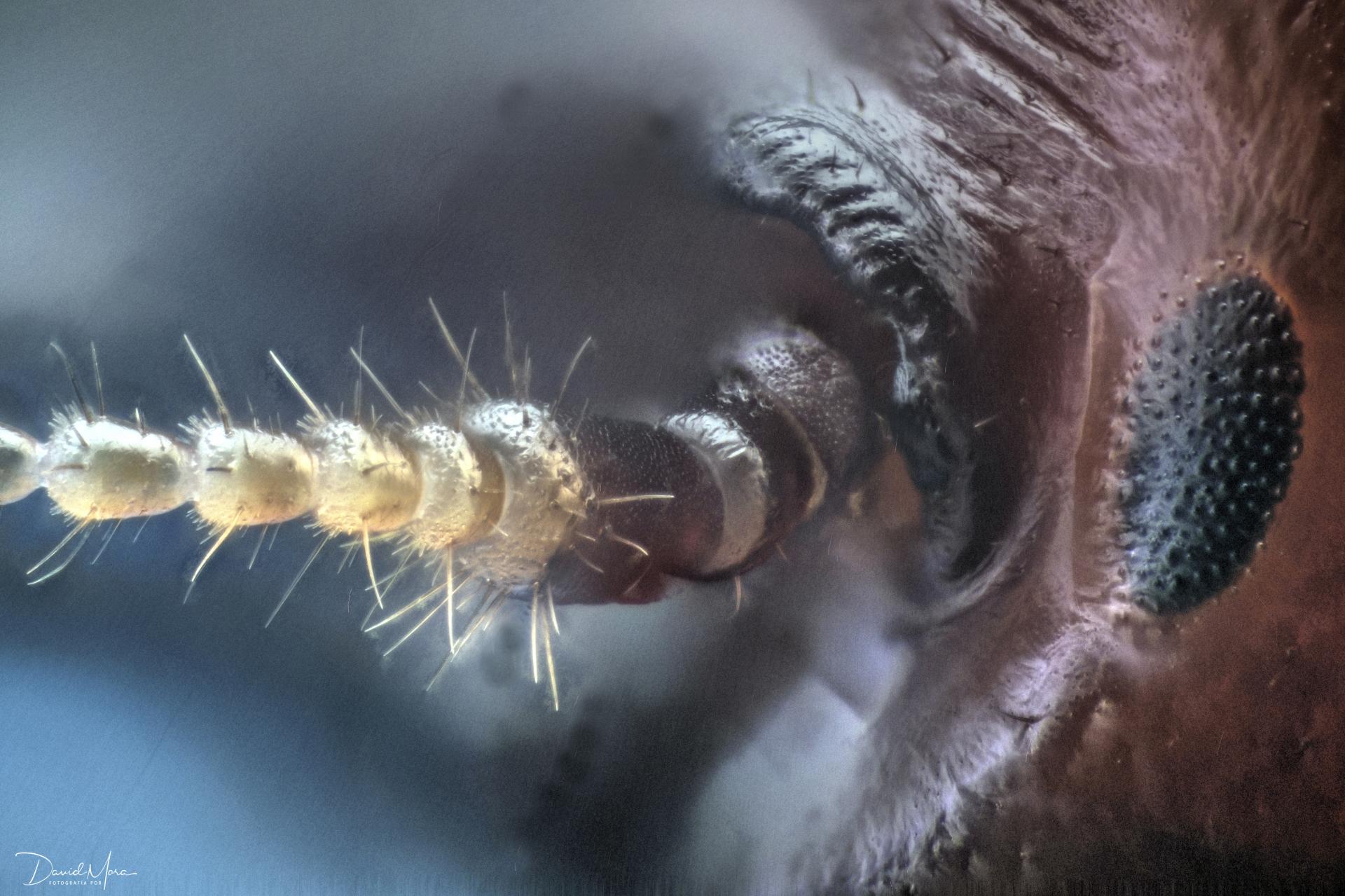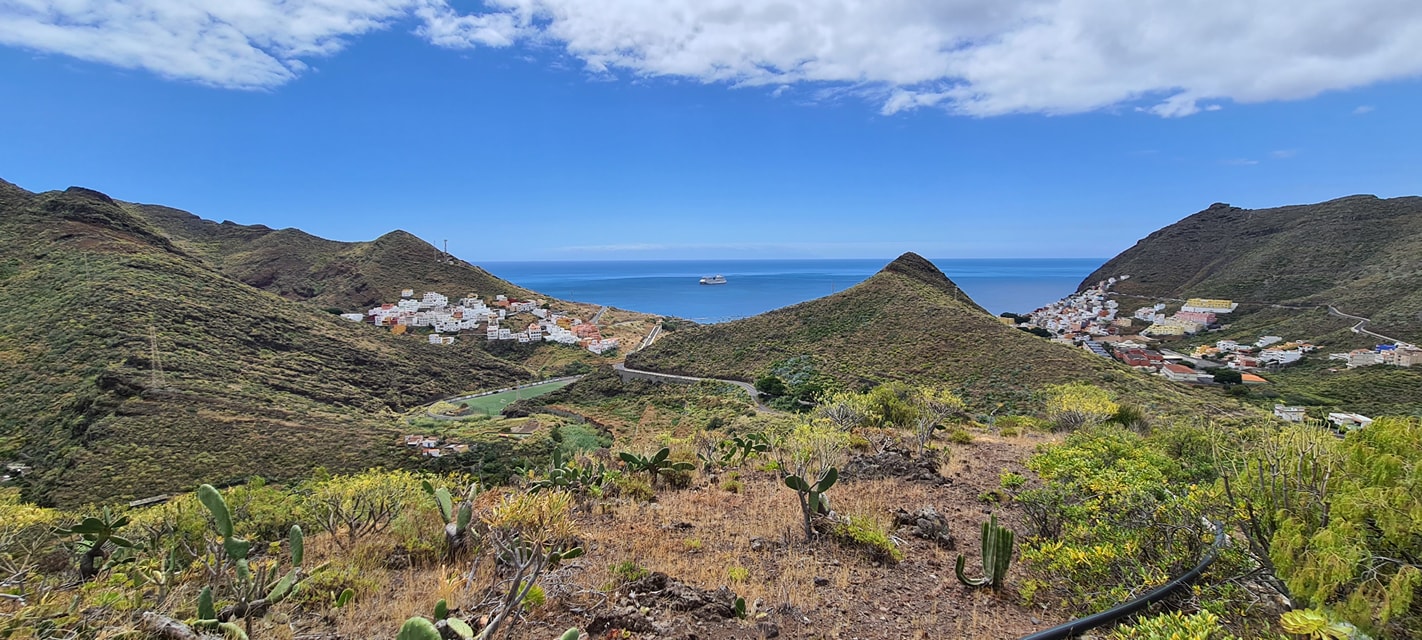After a long hiatus from the forum is time for another Termite's Corner, and this time we have an impressive drywood species: Bifiditermes rogierae!
These are large-sized, wood-dwelling termites from the Kalotermitidae family found only in the Canary Islands, a Spanish oversea archipelago located west of Morocco's coasts, where they can be found in dry shrublands dwelling inside dead specimens of the woody spurge Euphorbia balsamifera. This species sports very robust soldiers equipped with large crushing-type mandibles that can very quite heavily in size: while most are around 13-14 mm in lengh, some get as lare as 17-18 mm and others (exceptionally) as small as 8-9 mm; just like their pseudergates (as with all Kalotermitidae Bifiditermes lacks a true worker caste) they sport pigmented eyes. Despite their ability to live in completely dry wood these termites cause no damage to human structures and activities and are exclusively useful decomposers for their habitats. They also seems to be very tricky to keep in cativity compared to other Kalotermitidae; this is possibly due to food specificity but way too little is known in the regard.
A soldier of B. rogierae. Note its pigmented eyes and the extremely powerfully build legs with very large tarsi and tarsal claws, which grant these soldiers an excellent grip on the wood they inhabit. Pic by David Mora del Pozo.
The castes and life stages of B. rogierae: two soldiers, a pseudergate (false worker), a primary queen, a nymph, a larva and an egg. Only neotenic royals are missing. Pic by David Mora del Pozo.
A macro of the eye and antennal socket of a B. rogierae soldier; note the highly sclerotized ridge that protect the latter. Pic by David Mora del Pozo.
The dry Canarian brushland, home of B. rogierae. Pic by David Mora del Pozo.


